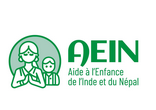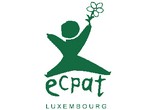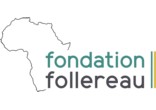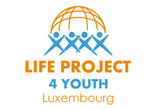
Shining Hope visits their reforestation project in Sri Lanka
Climate change is significantly impacting Sri Lanka, affecting various aspects of the country’s environment, economy, and society.
Here are just a few of the effects of climate change observed in Sri Lanka : increasing temperatures, shifting rainfall patterns, rising sea levels leading to coastal erosion, more frequent extreme weather events, disruptions in agriculture, water shortages, biodiversity loss, and implications for public health. All of these lead to related consequences for human and animal lives. Along with very steep cuts in emissions, it is required to remove much more carbon dioxide from the atmosphere than at present. The more that can be done now by protecting and expanding natural carbon sinks, including forests, the less reliance there will be on costly technologies such as carbon capture and storage.
President Ranil Wickremesinghe addressing the COP 27 Climate Change Conference in Sharm El-Sheikh, Egypt said that developing countries are the worst affected by rising emissions from the industrialized world and must be compensated. Responding to the situation the President has also launched the country’s ‘Climate Prosperity Plan’, a roadmap to attract foreign investment in Sri Lanka’s economy to boost economic growth and employment, while also accelerating climate adaptation and bringing down the country’s greenhouse gas emissions as it transitions towards net negative emissions.
Green Breathing Hope for Sri Lanka
One of Sri Lanka’s most critical environmental challenges is deforestation. The project of Shining Hope and its local partner Caritas Chilaw Janasawyia Sedec aims to fight deforestation, recover the biodiversity of the North Western Province, enhance actions to fight back CO2 emissions, and increase people’s awareness about environmental protection and conservation. The project intends to contribute to SDGs 13 and 15, namely Climate Action and Life on Land but indirectly it contributes also to number 3, Good Health.
Reforestation sites
After two years of the project, Shining Hope went to Sri Lanka to conduct an audit and assess the progress of the reforestation sites. First, it is important to clarify the criteria designed for the selection of these sites. We prioritised public areas where benefits can be enjoyed by all communities, spacious areas where trees can be easily planted and spaced, places with the availability of water and nutrients (compost), and sacred places where people’s respect is higher, and the symbolic value of the project activities is enhanced. A lot of sites are situated next to temples, churches, and public schools.
Community involvement
The visit enabled us to explore various types of sites designated for reforestation, including parish/temple courtyards, school grounds, and village streets. This was made possible through the collaboration and favorable opinions of key social actors such as school principals, local police, and parish priests. Furthermore, we observed that in schools, trees are entrusted to small student committees for care, while in parishes and villages, the responsibility falls upon the surrounding community members. For example, at each school site, every tree is assigned to a specific student who is responsible for caring for it. This involves watering the tree when needed, checking it daily, monitoring its progress in a special diary, and reporting any issues to the principal.
Later, trees are followed up by the committees and by the management team. This fosters both physical and economic involvement from the community in caring for the trees, selecting protective measures against animals during the growth process, and ensuring proper watering, among other tasks. The team has specifically chosen the most important and beneficial indigenous trees for reforestation, focusing on those that enhance oxygen production, possess medicinal properties, and provide food resources.
The Righteous Garden
The Garden of the Righteous is a symbolic space in some reforestation sites (mostly, churches and temples) that commemorates individuals who have demonstrated courage and selflessness in upholding the values of humanity. The names are chosen by the local committee of people who are involved in the project and our local partner. This garden celebrates those who risked their lives to save others during periods of conflict or oppression. It serves as a symbol of gratitude and reflection on the nobility of the human spirit, reminding us that even in the darkest moments, the light of solidarity and justice can shine brightly.
What is the progress ?
Some efforts have already been made in Sri Lanka in the past decade to replant trees and reforest the island. However, not all the operations were successful. Survival rates were significantly correlated with post-care as usually plants were not followed up or the plantation project was implemented in an unsuitable area for that species of tree. This is why the current management team involves specialists in the field and the government to select the most adaptive types of tree samples for this area, focusing on the indigenous, resistant, and highly qualitative (in terms of oxygen production and release) trees. Despite facing climate challenges such as high temperatures and watering difficulties, the actual rate of plant loss is notably lower than what was projected in the project plan.
At least 28,072 trees/plants have recently been planted in different areas (11,589 trees planted in the first year and 16,483 trees planted in the second year). The third and final year started in April 2024 and the project is assumed to end in March 2025, Shining Hope is proud of the results achieved and is working on the sustainability of the project in the coming years.
More information : https://www.shining-hope.org/



























